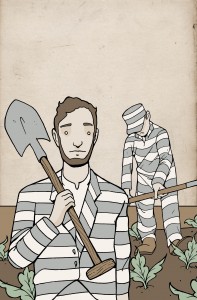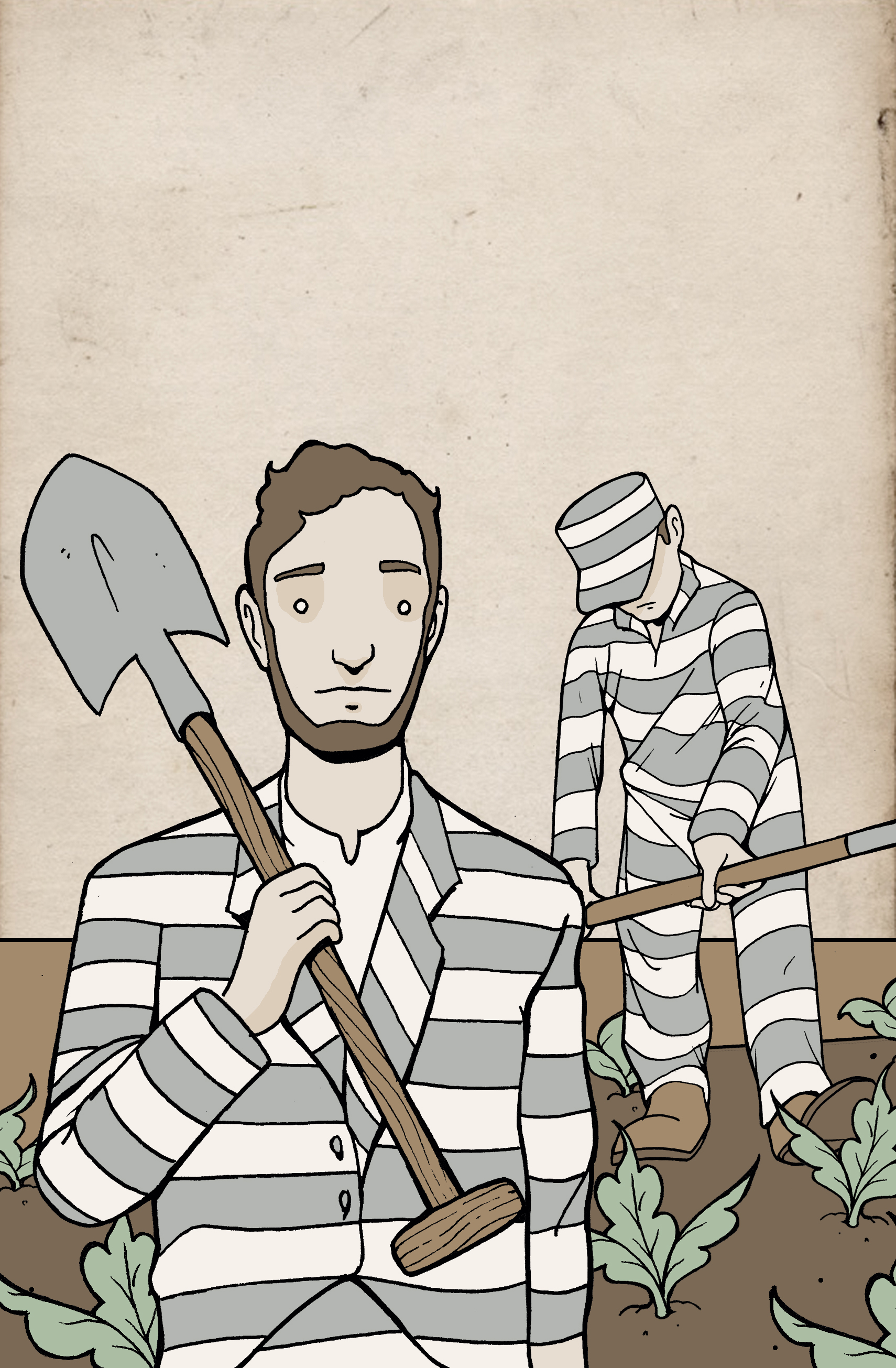
At the base of the Sugar House Monument sits a bronze statue of a woman, said to represent the fertility of the Salt Lake Valley. Local lore says the figure denotes agriculture, while the male figure on the other side signifies industry. Both enterprises were successful in pioneer-era Sugar House, and surprisingly, most evident at the Utah Territorial Penitentiary.
Brigham Young selected the site for Utah’s prison in 1853, choosing 80 acres for the facility six miles from the center of the city.
The first prisoners were west-bound immigrants who stopped in Utah, thinking they could profit quickly by exploiting the Mormon population. These incorrigibles were found guilty of “molesting the Saints,” said Elnora Rockwood Morris in a 1992 interview. Her grandfather, Albert Perry Rockwood, became warden of the prison in 1862.
A.P. Rockwood believed that hard work would help to rehabilitate the inmates while assisting the community. During his tenure as warden, most of the roads in the valley were built using prison labor. At first, prisoners who were taken to work off-site were likely to escape.
Another Rockwood descendant, Marian Rockwood Johnson said her grandfather’s solution was to design collapsible metal cages on wheels. This greatly limited the prisoners’ opportunities for escaping during transportation. At night, the cages were covered with canvas to protect the prisoners from the elements.
Under Rockwood’s leadership, the penitentiary became self-sufficient. The inmates manufactured their own clothing, shoes and socks. At one time, the facility had a kitchen, laundry, knitting-and-weaving room, tailor shop, hospital, carpenter’s shop, bake house, barber shop and chapel. There were many years when prison labor paid most of the prison’s operational expenses, and once netted a small profit.
By 1908, the Utah State Prison was a growing institution, with a record 283 prisoners. To meet their needs, the trustees farmed 130 acres outside the walls, with dairy cows, hogs and chickens for food, and a small herd of horses for sale. They cut 200 tons of hay, and grew a full assortment of fruits and vegetables for the maintenance of the prisoners.
Produce from the farm meant that the inmates and guards enjoyed a substantial and healthy diet. There was a large orchard of peach trees, plums and apples, and the fields produced potatoes, tomatoes, carrots, parsnips and beets.
When he was a boy growing up in the 1940s, Rawlins Young lived on the benches above the prison. He and his friends often walked along the railroad tracks down to the prison farm outside of the walls. They liked to scout out the melon patch, and in the late summer they’d go back with a little knife and eat a few of those ripe cantaloupe and watermelons.
“Sometimes we’d see the trustees,” Young said, “and they’d see us. They knew what we were up to, but I think they liked leaving some of those melons for us kids.”
In 1873, A.P. Rockwood started the Rockwood Fish Farm near the eastern edge of the present Forest Dale Golf Course. It was the first scientific fish hatchery in the world. Using laborers from the state prison, he raised trout, eels and (unsuccessfully) fresh water oysters as a supplemental food source for the local settlers.
The local agricultural tradition lives on, as demonstrated each summer at the Sugar House Farmers Market. And the large bronze lady with a fruit basket on her lap continues to promise a bountiful harvest to all the valley’s farmers.






